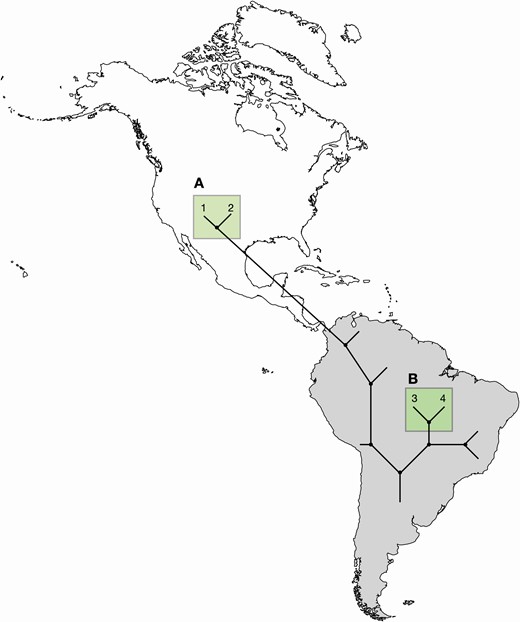Jim LeNomenclatoriste
Je suis un mignon petit Traquet rubicole

I just remark the paraphyly of Polystictus with Serpophaga. Of course, no name available for Polystictus superciliaris


Proposal (898) to SACCSpecies limits in the Tawny-crowned Pygmy-tyrant Euscarthmus meloryphus complex (Aves: Passeriformes: Tyrannidae)
ISMAEL FRANZ, DIEGO JANISCH ALVARES, MÁRCIO BORGES-MARTINS
Abstract
Euscarthmus pygmy-tyrants include two species of tiny passerines that inhabit semi-open landscapes in South America. One of these, Euscarthmus meloryphus is a taxonomic complex comprising three recognized subspecies for which previously proposed splits and lumps were not founded on proper taxonomic analysis. We assessed morphology (morphometrics and plumage), distribution models, and vocalizations of a substantial dataset with the aim of evaluating species limits within the E. meloryphus complex. Our results support the recognition of two species, the widespread E. meloryphus from east-central South America, and E. fulviceps from Ecuador and Peru, which are clearly diagnosable on morphological and vocal characters. We consider that E. meloryphus paulus from Colombia and Venezuela is a synonym of the nominotypical taxon based on the absence of diagnostic vocal and morphological characters. The allopatric distribution of the two populations of E. meloryphus may be related to the savannah connections during the LGM in South America. Further, we show that Lepturus ruficeps Swainson, 1838 is a synonym of E. rufomarginatus instead of E. meloryphus as it has long been treated.
https://www.mapress.com/j/zt/article/view/zootaxa.4809.3.3
Logically, the Rufous-sided Pygmy Tyrant/le Tyranneau à flancs roux (Euscarthmus rufomarginatus) become Euscarthmus ruficeps, by priority.
Can we actually use Campina now?By combining the unpublished work of Kohler and that of Harvey et al (2020), I recognize these genera within the subfamilyTodirostrinae (alphabetical order) :
Campina (one the new recognised unpublished genera) 2 species
Ceratotriccus (absorb Poecilotriccus) 12 species
Euscarthmornis 4 species
Hemitriccus 2 species
Microcochlearius 8 species
Myiornis 2 species
Oncostoma (absord many genera) 13-14 species (if pallens is considered as distinct species)
Perissotriccus 2 species
Todirostrum 7 species
It was just a little passing comment oklm 😎

No because is not published yet, so it's a numen nudum for now. However I use it in my personal listCan we actually use Campina now?
nidipendulusAnd what is the type species of Euscarthmornis?
Ah, those guys. Merci!nidipendulus

So contained within a broader Oncostoma if that's what suits you. Excellent! 🙂De rien
minor



Unfortunately not yetDo you have a pdf to share?

I've not seen it, but I suspect it might be more respectful of the authors to say that this paper turned out not being the type of thing you're specifically after ?This paper is a disappointment

At least, for me. This paper is not what I expected... (sorry, I'm very spontaneous and "without filter")This paper is a disappointment
Platyrinchidae: SpadebillsSundevall, 1836
3 genera, 9 speciesnot HBW family
A Calyptura/Neopipo/Platyrinchus clade is basal within the Platyrinchinae. The Kinglet Calyptura has traditionally been included with the cotingas, but Ohlson et al. (2012) show that it belongs here. The Kinglet Calyptura was long believed extinct when rediscovered in the mid-1990's. Its future remains doubtful.
Although Tello et al. (2009) considered Neopipo unrelated to Platyrinchus, Rheindt et al. (2008a) and Ohlson et al. (2008) found evidence they are sister taxa. This has all be superseded by Harvey et al. (2020), which also found them to be sister taxa.
Harvey et al. (2020) also found a very deep division, about 18 million years, between Calyptura and Neopipo. It could easily be recognized at the subfamily level. I have used subfamilies to highlight the deeper division between those two species and Platyrinchus. Although they are not so deep, there are fairly deep divisions between the three Platyrinchus clades. It would nice to have genus names for them, but I do not know of any.

Good jobOn behalf of John Boyd, are there any issues with Ridgway's Placostomus (for coronatus) or Platytriccus (for cancrominus, saturatus, & mystaceus) ?

Mike Harvey et al's work pretty much covered all the suboscines and he very kindly posted a tree for us all to 'fill our boots' with here: https://www.mgharvey.org/docs/Harveyetal2020_Fig1_tree_HiRes.pdfA couple questions for the taxonomy / phylogeny wizards here:
How confident are people of the placement of Pseudotriccus in Elaeniinae and not Platyrinchinae, confirmed or doubted?
Also I would welcome comments about the placement of Myiornis with respect to Hemitriccus, and H margaritaceiventer with respect to those two genera.
Cheers in advance for thoughts from those who will have spent a lot longer looking at this than I have!

Et encore ! Boyd may not know the potential new genera mentioned in an old thread (Campina, Physatriccus etc.)Myiornis was found to be polyphyletic. The whole Triccinae is pretty messy.
John Boyd has done a pretty good job of untangling it. See this (page 3) http://jboyd.net/Taxo/Rhynchocyclidae.pdf
Yes and if I recall correctly one of the names is derived from someone emptying their bladder.Et encore ! Boyd may not know the potential new genera mentioned in an old thread (Campina, Physatriccus etc.)
